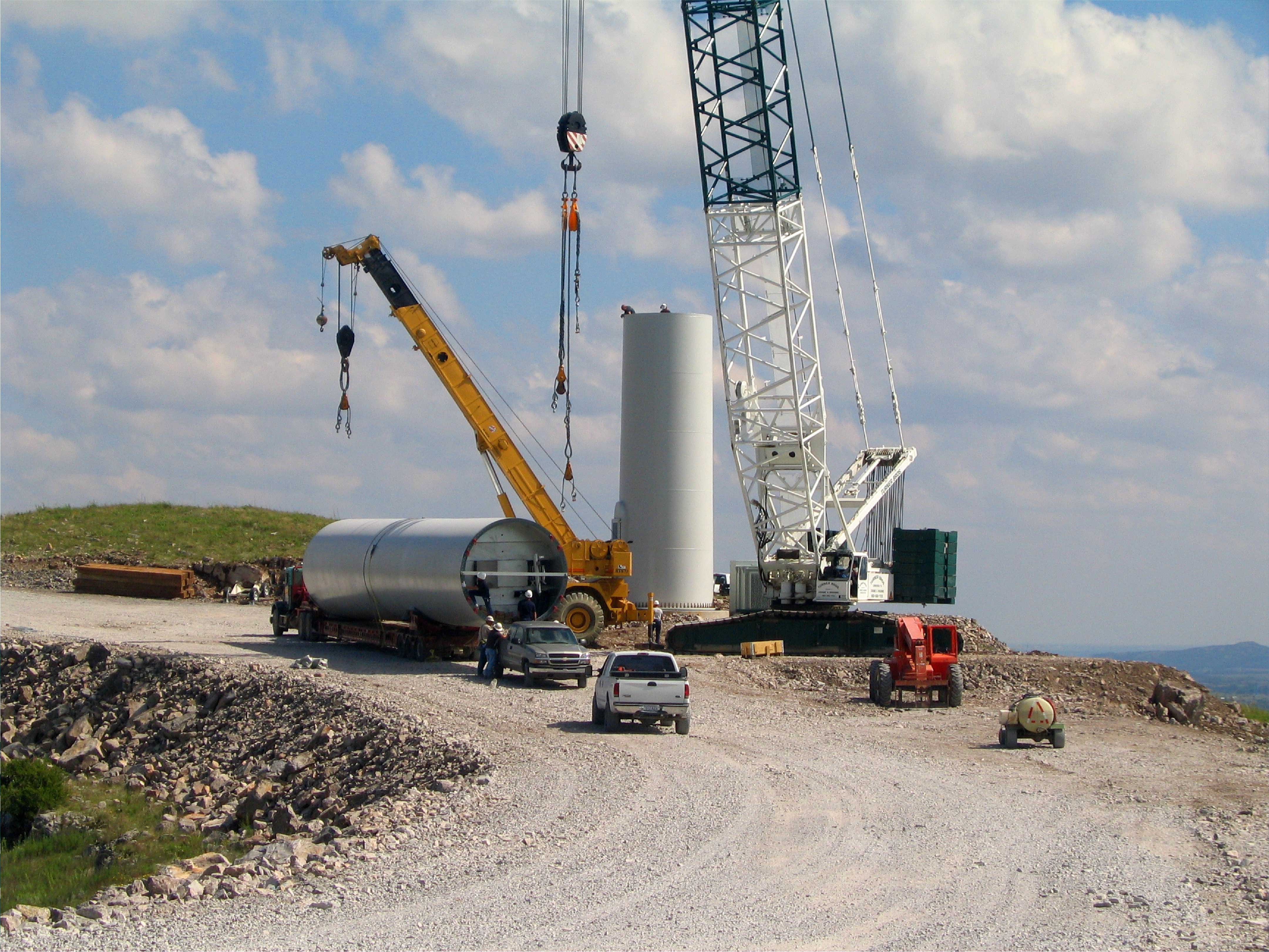
Repowering Renewables: Breathing New Life into Legacy Wind Energy Infrastructure
Repowering gives wind projects a second life—boosting clean energy output, supporting local communities, and reducing environmental impact.
Wind energy infrastructure across North America generates more clean power today than any other form of renewable energy. Wind projects create jobs, spur economic growth, and drive investments in the community. But what happens when a wind project’s technology needs an upgrade, or its life is fulfilled? A process called repowering enables older wind projects to deliver benefits far beyond their original lifespans, boosting energy production and making wind energy ever more resilient for the communities they support.
Why repower a wind farm?
Like any other technology, wind component technology is constantly improving. To help harness those improvements, project owners like EDPR North America (EDPR NA) may propose “repowering”: upgrading wind energy infrastructure with new technology to increase the project’s performance, efficiency, and lifespan.
What does repowering a wind project entail?
Repowering can take multiple forms: refurbishment, partial, or full. In every case, the goal is to extend the life of a project by 15, 20, or even 30 years beyond the original contract.
A refurbishment replaces the main components within the turbine nacelle, such as gearboxes and generators. The turbine blades, tower, and foundation remain in place—keeping the project’s original footprint intact.
A partial repowering replaces the turbine blades and all or part of the nacelle components. The original turbine tower and foundation remain in place.
A full repowering is more extensive and includes the decommissioning of the project’s turbines. A full repowering project can involve relocating turbine towers due to engineering or technical requirements. The entire turbine will be replaced with newer, more efficient turbines, which can mean fewer installed turbines, and a reduced footprint.
What are the advantages of repowering?
Repowering is designed to benefit everyone involved in a wind farm, from the landowner to the local community to the energy off-taker. At its heart, repowering is about breathing new life into existing assets, minimizing our environmental footprint, and creating a more efficient renewable energy system every step of the way.
Recommitting to local landowners
Wind projects have been proven to be extremely advantageous for local landowners, many of whom have farmed or ranched their land for generations. They provide a predictable source of income while retaining the land’s productivity for agriculture, ranching, recreation or other uses.
Illinois farmer John Dollinger, landowner of the Top Crop Wind Farm, puts it this way: “The income from the wind farm is very stable, as opposed to farm income, which is kind of up and down. Actually, a lot of the income from the wind farm has gone back into the land, so it’s improved our farmland so we can grow more corn and soybeans.”
Repowering the Blue Canyon II Wind Farm in Oklahoma, originally built in 2005, has extended the project’s life another 16 years—without needing to build any additional wind towers or take up more land. Since the Blue Canyon II farm was upgraded, annual energy production has increased by 32 percent.
Reinvesting in rural communities
Extending the life of a wind project creates new economic opportunities for rural communities in the form of jobs, local business growth, and tax revenues. Upgrading a wind project requires hiring local teams of wind technicians to do the work, and almost every kind of local business -- from restaurants to retailers to electrical contractors – sees an uptick in sales as a result. Long-standing and strong relationships fostered between EDPR NA and the local communities in Caddo, Comanche, and Kiowa Counties in Oklahoma resulted in an invitation to repower Blue Canyon II and, in so doing, extend the benefits associated with the project’s lifecycle.
––Businesses aren’t the only beneficiaries. Tax revenues from wind projects directly benefit schools that are often underfunded. They can also help support roads and infrastructure projects that create yet more jobs, without the need to raise taxes on the community.
In Paulding County, Ohio, tax revenues from EDPR NA wind projects have allowed the Wayne Trace Local School District to hire additional teaching staff and tutors— improving students’ scores in English, language arts, math and even graduation rates. “By increasing staff to directly assist these vulnerable students, we are able to close the gap and achieve higher marks,” noted Benjamin Winans, Superintendent of the Wayne Trace Local School District. “We are very grateful to have the wind revenue assistance in our educational processes.”
Restoring confidence in affordable, clean grid power
Repowering existing wind farms with new technology is crucial as energy needs and costs continue to rise. With the growth of data centers and the advent of artificial intelligence, energy supply must continue to meet the increasing power demands. Wind and solar power provide an ever-increasing percentage of affordable energy on the electric grid. Wind energy now supplied 10.1% of the country’s electricity—generating enough power to serve the equivalent of 46 million American homes, according to the American Clean Power Association.
Land-based, utility-scale wind turbines provide one of the lowest-priced energy sources available today. Wind energy’s cost competitiveness continues to improve as its technology advances – which is precisely the point of repowering existing wind assets.
Repowering isn’t just a technical upgrade—it’s a powerful recommitment to our communities. Modernizing legacy wind projects extends their benefits for decades to come, renews local infrastructure and advances a sustainable energy transition for generations to come. Modernizing legacy wind projects extends their benefits for decades to come, renews local infrastructure, and advances a sustainable energy transition for generations to come.
Blue Canyon Wind Repowering
The Blue Canyon Wind Farm in southwestern Oklahoma was originally built in 2005, with a project life of 20 years. Since being partially repowered in 2021, the project’s life has been extended 16 years beyond its original life.
Author:
Sarah Oblon - Distelrath | Director of Development
e: Sarah.Distelrath@edp.com
Connect on LinkedIn




